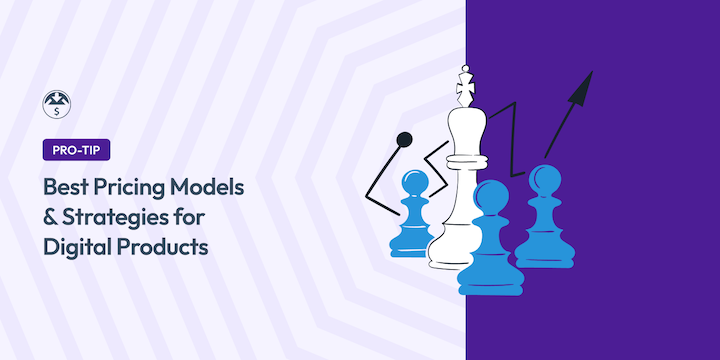
Are you trying to determine the best pricing models for selling digital products?
You poured your heart and soul into creating a stellar digital product—be it an eBook, a time-saving plugin, a captivating online course, or another type of digital download.
But before you hit publish and watch the sales roll in, there’s a crucial question: how much should you charge?
This is where your online business pricing model comes in.
🔎 In this article, I’ll cover:
What Is a Pricing Model?
A pricing model is a framework that determines how you price your digital product. It goes beyond simply slapping a dollar amount on it and considers factors like:
- Perceived value
- Cost of production
- Market trends
- Customer buying behavior
It’s the strategy that business owners use to determine the value of a digital product and translate that value into a price that resonates with customers. This is the core structure that defines how you charge for your digital goods.
It could be a one-time fee, a recurring subscription, or a more creative approach like pay-what-you-want.
Choosing the right pricing model is vital for eCommerce success. It impacts everything from your sales volume and revenue to customer perception and brand reputation.
Think of pricing as a map that guides your customers towards the value you offer. A pricing strategy builds upon the chosen pricing model and encompasses the specific price points, tiers, and promotional offers you implement within your chosen model.
Importance of Pricing Models & Strategies
Setting the right price for your digital downloads is a delicate dance. It needs to be high enough to reflect the value you provide and generate a healthy profit, but also low enough to attract customers and not price yourself out of the market.
Choosing the best pricing model for your digital product business is important because it:
- Optimizes sales & revenue. The right price can maximize your online store sales volume and ensure you’re fairly compensated for your work.
- Attracts the right customers. Pricing sends a message about your product’s value. You want to attract customers who appreciate what you offer.
- Builds brand perception. Higher quality products priced accordingly build a strong brand image.
Having a well-defined pricing strategy isn’t just about recouping costs; it’s about understanding your target audience, their needs, and how your product solves their problems. It’s about striking the perfect balance between maximizing your profits and ensuring your product is accessible to those who need it most.
Digital Product Pricing Factors to Consider
Choosing the right pricing model depends on several factors. For instance, you need to consider production costs, competitor pricing, and perceived value to determine the optimal price points for your chosen model.
Additional factors to consider include:
- Product type: Consider the complexity, ongoing value, and target audience of your product. What value does your product offer?
- Customer needs: Understand your ideal customer’s budget and what kind of value they seek. How does your product solve customer problems or improve their lives?
- Business goals: Do you prioritize maximizing revenue, customer acquisition, or recurring income?
- Competitor analysis: Research your competitors’ pricing models and identify any potential opportunities to differentiate yourself. Can you offer a better value proposition at a similar price point?
Best Pricing Models for Digital Products
Now, let’s explore the various pricing models at your disposal, along with their advantages, disadvantages, and implementation tips using Easy Digital Downloads (EDD).
Summary of Best Pricing Models for Digital Products
This table provides an overview and comparison of the best pricing models:
| Pricing Model | Definition | Pros | Cons | Best For |
|---|---|---|---|---|
| Cost-based | Setting prices based on the cost of producing and delivering the product, plus a desired profit margin. | – Simple to calculate – Ensures profitability | – Doesn’t account for customer perceived value – Can underprice premium products | Digital products with low development costs |
| Value-based | Setting prices based on the perceived value of the product to the customer. | – Maximizes revenue potential – Aligns pricing with customer willingness to pay | – Difficult to determine customer perceived value – Can overprice in some markets | Premium digital products with high perceived value |
| Tiered | Offering different product versions or feature sets at different price points. | – Appeals to different customer segments – Allows upselling to higher tiers | – Can be complex to manage – Risk of cannibalization between tiers | Software products with scalable features |
| Subscription | Charging a recurring fee for ongoing access to a product or service. | – Predictable recurring revenue – Encourages customer retention | – Can be high switching costs for customers – Need to continually add value | Digital services with frequent updates or content |
| Freemium | Offering a basic version for free and charging for premium features or services. | – Attracts users with free version – Opportunity to upsell to paid version | – Challenging to convert free users to paid – Need to balance free and paid value | Digital products with scalable features |
| Pay What You Want | Allowing customers to choose how much to pay for a product. | – Appealing to price-sensitive customers – Promotes positive brand image | – Difficult to predict revenue – Risk of underpricing | Digital products with low marginal costs |
| Product Bundling | Offering multiple products or services together at a discounted price. | – Increases perceived value – Cross-selling opportunities | – Can be complex to manage – Risk of cannibalization of individual products | Digital products with complementary offerings |
Remember: This is just a starting point. You can experiment with different models or even combine them to create a hybrid pricing strategy that perfectly aligns with your unique product and target audience.
1. Cost-Based Pricing
This straightforward approach involves calculating the costs associated with creating and delivering your product (e.g., software development, design fees, content creation) and adding a desired profit margin to arrive at the final price.
This model sets the price of your product by adding a markup percentage to the total cost of production, development, and distribution. It’s a straightforward approach that ensures you cover your expenses and generate a profit.
Cost-based pricing is often used for basic digital products with well-defined production costs, like eBooks with minimal design elements or stock photos with a set production cost.
While cost-based pricing offers a starting point, it shouldn’t be the sole factor in determining your final price. Be sure to consider the value proposition of your product, competitor pricing, and customer needs to ensure you’re striking the right balance.
2. Value-Based Pricing
With the value-based pricing approach, the price is based on the perceived value that your product delivers to the customer, rather than distribution costs or production costs.
Imagine the positive outcomes or transformations users experience after purchasing your download. Focus on the impact and benefits your product provides, such as the pain points it alleviates.
The more your product solves a problem, improves lives, or saves time, the higher you can price it.
Use EDD’s powerful pricing options to showcase the benefits alongside the price tag. Consider highlighting success stories or testimonials from satisfied customers.
3. One-Time Fee (Pay Once Model)
This is the classic model where customers pay a single fixed price upfront fee to gain access to your digital product. It’s great for simple, well-defined products like eBooks, downloadable templates, stock photos, or plugins with a single function.
EDD is perfectly suited for one-time fees. You simply set a price for your product and publish it:
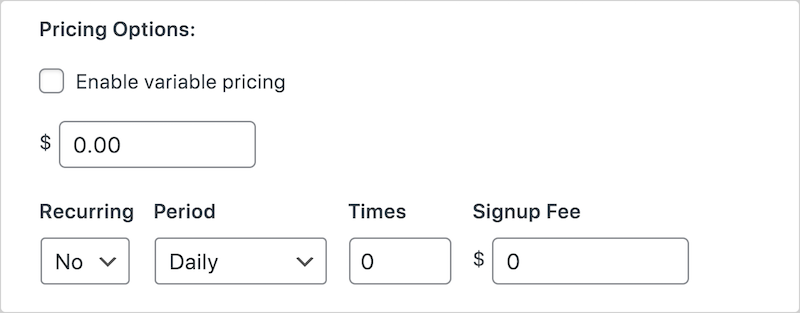
You can also include a clear description of what the customer gets for their purchase.
4. Subscription Pricing
With subscription pricing, customers pay a recurring fee (monthly, quarterly, yearly) to access your product or a collection of products. While it’s possible to use this structure for physical products, this pricing model is popular in digital marketing as it’s ideal for digital products with ongoing value, such as:
- Software with continuous updates
- Exclusive member content
- Access to online communities
If you run a subscription-based business, there are multiple ways you can structure your pricing model. For instance, a flat rate, tiered, usage-based, etc. The most used subscription pricing model among the majority of subscription commerce merchants (52%) is a flat rate.

This is followed by the good/better/best model (also known as tiered pricing, which I’ll cover next).
EDD makes it easy to set up subscription billing with extensions like Recurring Payments and All Access.
You can also seamlessly integrate with plugins like Restrict Content Pro, MemberPress, and Paid Memberships Pro. These plugins add features like recurring payment processing and tiered subscription options to your store.
5. Tiered Pricing
Tiered pricing is one of the best pricing models for digital products because it lets you offer your product in multiple tiers with varying price points and feature sets.
This pricing model caters to different budgets and customer needs, allowing customers to choose the option that best suits them. It’s ideal for products with varying levels of complexity or for providing different access levels to content.
For instance, it would be ideal for offering a plugin with a free basic version, a premium version with advanced features, and an agency version with multi-site licensing.
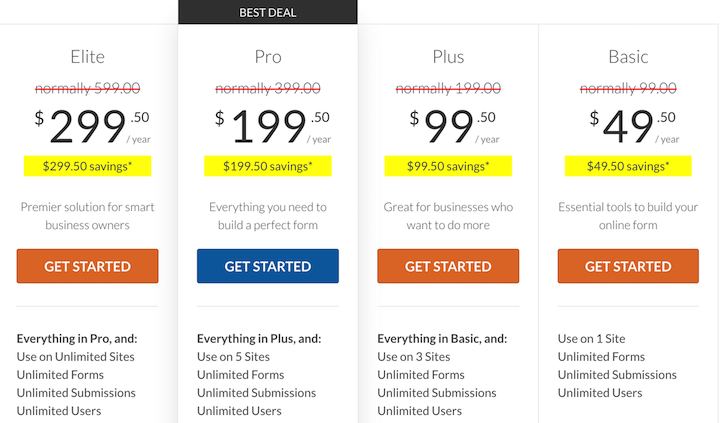
EDD allows you to create multiple price options for a single product. Each price option can have its own set of features and benefits clearly outlined.
Create separate download options within EDD for each tier, clearly outlining the features included in each.
6. Freemium Pricing Model
Similar to tiered pricing, this strategy offers a basic version of your product for free, encouraging users to upgrade to a premium version with additional features or functionalities.
If you’re a small business, freemium can be a great way to attract new customers and build a user base while also showcasing the core value of your product.
EDD allows you to create a free download for the basic version of your product. You can then set up separate paid downloads for the premium versions with their additional features clearly highlighted.
7. Pay What You Want (PWYW)
This approach allows customers to determine the price they’re willing to pay for your product. While it can be risky, it can also foster goodwill and attract budget-conscious customers. It can potentially lead to higher average order values if other products are offered alongside the pay-what-you-want option.
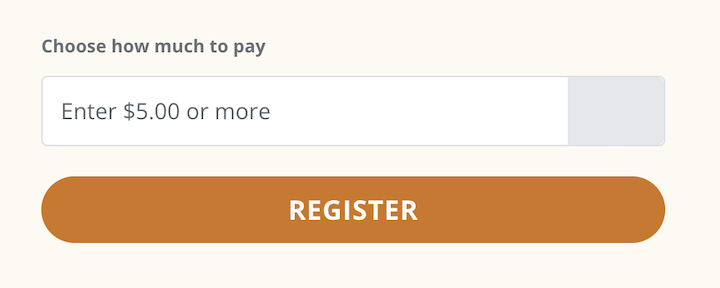
While it can foster trust and customer appreciation, it’s important to manage expectations and ensure you receive fair compensation for your work.
EDD lets you implement the PWYW pricing model using the Custom Prices add-on.
Another option is to offer the product as a free download and include a prominent “donation” button on the product page, linking to a payment processor like PayPal.
8. Product Bundling
Rounding out our list of the best pricing models for digital products is product bundling. This model involves combining multiple digital products into a single package at a discounted price.
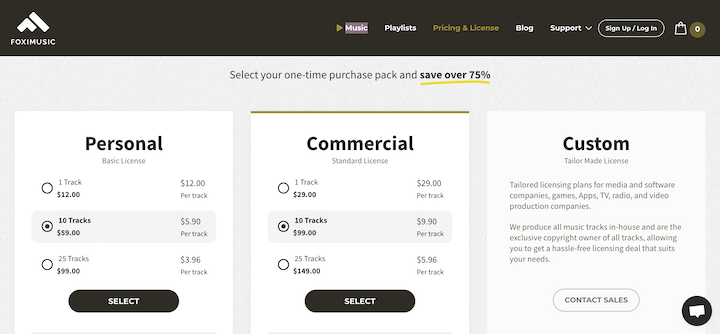
Bundling allows you to offer customers more value for their money and encourage them to purchase additional products they might not have considered on their own. It’s an excellent way to create enticing offers and boost sales.
EDD’s Plets you easily group multiple products together and set a discounted price for the bundle.
Tips for Choosing the Best Pricing Models
While choosing the right pricing model is crucial, it’s just one piece of the puzzle.
Once you’ve established a baseline pricing strategy, consider these tactics to maximize your revenue and customer base:
Implement dynamic pricing. This could involve adjusting prices based on factors like customer location, purchase history, or even real-time demand.
Utilize upselling and cross-selling. Leverage EDD’s Cross-sell and Upsell extension to recommend related products during the checkout process. Upselling encourages customers to purchase a higher-tier version of your current product, while cross-selling suggests complementary products that enhance the value of their initial purchase.
Focus on building value. Continuously strive to enhance the value you deliver to your customers. This could involve offering bonus content, updates, or exclusive access to a community. By exceeding customer expectations, you justify your pricing and encourage repeat business.
Offer a money-back guarantee. Consider offering a money-back guarantee to mitigate customer risk and increase trust. This demonstrates confidence in your product’s value.
Leverage promotional strategies. Utilize strategic discounts, coupons, and limited-time offers to create a sense of urgency and incentivize purchases.
Track key metrics. Use EDD’s built-in reporting tools to monitor key metrics like conversion rates, average order value, and customer acquisition costs. This data will help you identify areas for improvement and refine your pricing strategy.
Gather customer feedback. Actively solicit feedback from your customers through surveys or email campaigns. Ask them about their experience, including their perception of value and whether they find the pricing fair.
Experiment and analyze. Don’t be afraid to test different pricing models and analyze the results to see what pricing sweet spot resonates best with your audience. Use A/B testing tools to compare different price points and landing pages to identify the most effective approach.
FAQs on the Best Pricing Models
Let’s wrap up with some frequently asked questions on pricing models and strategies for digital products and downloads in WordPress.
What is the best pricing strategy for digital downloads?
There’s no one-size-fits-all answer. The best pricing strategy for digital downloads depends on your product, audience, and goals.
Optimal pricing considers production costs, competitor pricing, and the perceived value you offer to customers.
Determining the optimal price point for a digital product is a multi-faceted process that considers several factors:
- Estimate production costs
- Research competition
- Define your value proposition
- Understand your audience
- Consider business goals
Once you have this information, you can experiment with different pricing models (value-based, tiered, etc.) and track sales data to see which approach resonates best with your audience and achieves your business goals.
Can I change my pricing model later?
Absolutely! Market conditions, customer feedback, and product evolution can all necessitate a pricing model shift. Communicate the changes clearly to your existing customer base and offer incentives for a smooth transition.
What’s the best pricing model for an online course?
The best model for your online course depends on factors like complexity, target audience, and competition. Consider value-based, one-time fee, or tiered pricing.
What are the best pricing models for selling software?
For software, subscription, tiered, and freemium models can be effective, allowing for recurring revenue and catering to different needs. Subscription and tiered models are often ideal for SaaS products due to their ongoing value and potential for feature differentiation.
How do I handle price objections from customers?
Be prepared to articulate the value proposition of your product. Highlight the benefits they receive and offer additional resources like testimonials or case studies.
Implement the Best Pricing Models With EDD
By understanding your value proposition, experimenting with different pricing models, and considering all the relevant factors, you’ll be well on your way to finding the best pricing models that maximize both your revenue and customer satisfaction.
Easy Digital Downloads equips you with the flexibility and tools to implement various pricing strategies for your digital products and downloads.
Don’t have Easy Digital Downloads yet? Grab your pass today:
What’s next? Explore ways you can increase sales with Easy Digital Downloads!
📣 P.S. Be sure to subscribe to our newsletter and follow us on Facebook or Twitter for more WordPress resources!
Using WordPress and want to get Easy Digital Downloads for free?
Enter the URL to your WordPress website to install.
Disclosure: Our content is reader-supported. This means if you click on some of our links, then we may earn a commission. We only recommend products that we believe will add value to our readers.
I have impression that in each niche there usually is similar pricing model among all competitors. I would be very much interested to see a case study, when one of companies decided to use completely different model than the rest, and succeeded.